Previously … I ranked the best of 1971-75.
This was not DC’s greatest era. Too many books struggled in the awkward adolescence between the exuberant Silver Age and the more polished ’80s, and too few were on par with Marvel’s output. Nevertheless, DC still produced some gems, and it ended this period on the upswing, hinting at greater heights to come.
Both the DC Universe digital library and my own collection have plenty of gaping holes in this era, so there may be other gems I’m missing. If so, please let me know in the comments!
As usual, these selections are based on publication date, not cover date (which makes all the difference for a couple).
10) Superman #338 (by Len Wein, Curt Swan, and Frank Chiaramonte)
Superman performs a long-overdue Herculean labor in this 40th-anniversary issue, as he goes to tremendous lengths to enlarge the shrunken Kryptonian city of Kandor. He must endure the heart of a supernova, the menace of Brainiac, and the risk of being permanently shrunken himself. He refuses to jeopardize a single Kandorian life until he’s certain the device will work. And, to ensure they don’t lose their chance to restore Kandor, Supergirl even needs to talk Superman out of trying to save Brainiac from the villain’s own invention.
It may be a housekeeping issue, but the housekeeping feels earned and entirely appropriate, dealing Superman and Supergirl a combination of victory and loss and reestablishing them as the sole surviving Kryptonians in this universe—as they should be.
9) Detective Comics #485, 489-490 (by Denny O’Neil, Don Newton, and Dan Adkins)
Though not all contiguous, these issues constitute a single story. Ra’s al Ghul and the League of Assassins feud while Batman is caught in the middle, trying to save everyone he can and not always succeeding. The matter becomes personal early on when the League murders Kathy Kane, the former Batwoman.
The best Batman stories remember that there’s a human being beneath the cape and cowl, and we get that here. Batman must combine brains and brawn to oppose the League’s mad Sensei, and he’s pushed to his limit. This leads to a wonderfully memorable moment in which an exhausted Batman arrives to save an archbishop from a soon-to-explode building—but the man won’t budge.
“I have been beaten,” Batman says. “I have been shot. I’ve been subjected to fists and bullets and rockets and dynamite—in order to save your life—and you dare … you dare refuse to have it saved?”
Fortunately, for all his troubles, Batman gets to ride off into the sunshine with Talia … for a day, at least.
8) Justice League of America #140-141 (by Steve Englehart, Dick Dillin, and Frank McLaughlin)
Elements of this story should be familiar to fans of the animated Justice League series. A Manhunter comes to Earth to arrest Green Lantern, and GL doesn’t even try to fight back. He truly believes he accidentally destroyed a planet, and his guilt compels him to accept his punishment.
But his teammates are skeptical. Plus, more than Hal’s reputation is at stake, as the Manhunters seek to discredit the Guardians of the Universe and the entire Green Lantern Corps. It’s a revenge scheme eons in the making, and we learn a fair bit of DC Universe lore along the way.
However, the lore isn’t what makes the story so fun—it’s the dynamic between these seven Justice Leaguers and how they work together to save the day. Green Arrow and Black Canary defend a guilt-ridden Green Lantern. Wonder Woman and Flash work through some personal tension as they struggle to save the JLA satellite. And the World’s Finest duo of Superman and Batman combine their talents to solve the mystery of the “destroyed” planet. Classic JLA all around.
7) Action Comics #484 (by Cary Bates, Curt Swan, and Joe Giella)
DC had an extra Superman hanging around during this era—the Superman of Earth-2 (who was technically the original Superman who debuted in 1938). Creators had a bit more freedom with this supplemental Superman, and in this other 40th-anniversary issue, he gets his happily ever after with Lois Lane, something that could never happen with the Earth-1 Superman (not back then, anyway).
A magical villain named the Wizard makes Clark Kent forget that he’s Superman, which allows the mild-mannered reporter to become a real man. For once, Clark is confident and assertive, and he goes after what and who he wants, including Lois. They fall in love and get married while Clark remains under the Wizard’s spell. Superman, meanwhile, has mysteriously disappeared, but Lois is determined to bring him back—even if it means sacrificing her marriage.
The issue pays tribute to a previous era of Superman—complete with clunky, old-school robots—and it imagines a path for Superman to grow into a new phase of life. Plus, in a nice reversal, Lois gets to be the one who saves him.
6) All-New Collectors’ Edition #56 (by Neal Adams and Denny O’Neil)
Superman teams up with real-life boxing legend Muhammad Ali to save the world from aliens who have deemed humanity too dangerous to live. And, somehow, this gimmick works.
Adams and O’Neil cast Ali as a virtuous hero, every bit as noble and sharp as Superman himself. That was the way to go, given that this is a comic book and not a biography. The two protagonists complement each other, with Superman performing epic feats while Ali teaches the Man of Steel a thing or several about boxing and goes the distance for the Earth. Ali’s descriptions of various boxing techniques are on point and delightfully whimsical.
The other real-life star here is Neal Adams, whose detailed, kinetic art style is equally at home on city streets, in the midst of an alien armada, and right in the thick of the boxing ring.
As Superman and Ali face off for the honor of defending the Earth, they work together to save it. In doing so, they redeem humanity in the eyes of countless alien races by demonstrating a shared core value: fair play. It’s the best kind of cheese.
5) Black Lightning #1-8 (by Tony Isabella, Trevor Von Eeden, and Vince Colletta)
DC was late in introducing its first black superhero lead, but don’t blame the book. Historical significance aside, the storytelling feels more modern than most other DC titles of the era. These first eight issues serve as one long debut storyline, slowly fleshing out a dynamic protagonist, his neighborhood, his civilian identity, his enemies, and his supporting cast while tying him into the broader DC Universe. Each issue feels like a complete chapter while propelling us into the next one as we watch Black Lightning develop.
Jefferson Pierce had managed to escape his crime-ridden hometown, Metropolis’s Suicide Slum. He achieved great success as an Olympic athlete, and now he returns to make a difference as a teacher at his old high school. But he quickly earns the ire of the criminal organization known as the 100, and they make a tragic example of one of his students. Jefferson realizes he needs to become something more to root out these gangsters—and he needs to become someone else to ensure the safety of his students.
That’s merely the start, and subsequent issues build on that strong foundation, creating a well-rounded superhero in a setting that feels lived-in.
4) Detective Comics #478-479 (by Len Wein, Marshall Rogers, and Dick Giordano)
Batman struggles to come to terms with a lost love while a new Clayface struggles to regain his humanity. Unfortunately, Clayface’s condition compels him to infect and kill others to maintain his own existence.
Preston Payne is not a naturally evil man, however. A genetic condition left him physically misshapen and doomed him to a friendless, loveless life. He became so desperate that he turned to the original Clayface for a chance to change his appearance. And the cure only curses him further, transforming him from ugly to horrific and dangerous.
Batman knows none of this. He doesn’t know that this new Clayface was born out of a basic desire for human connection, the sort of connection that Batman himself just lost and now yearns for. It adds another layer to the villain’s tragedy—Clayface is defeated by a man who might have sympathized with his plight, perhaps the only man who might have been able to help him.
3) Detective Comics #500 (by Alan Brennert and Dick Giordano)
It’s another retelling of Batman’s origin but different from all the others—because this time, Batman gets to intervene and save his parents.
The enigmatic Phantom Stranger gives Batman an opportunity to travel to an alternate Earth where another Bruce Wayne is about to watch his parents die. It’s a second chance he never expected to receive, so he takes it.
He and Robin arrive in a world without superheroes, a world that doesn’t have any heroic mythology, which raises a dilemma: If they save the Waynes, are they depriving the world of its only costumed crimefighter? But when the moment comes, it’s no dilemma at all. Two lives need saving, so Batman saves them—and earns a measure of catharsis.
We get an interesting epilogue on the final page. This world’s Bruce Wayne was especially immature and self-absorbed, but after watching his older counterpart save his family, he’s a changed boy—studious, disciplined, and with a sudden interest in physical fitness. This world might get its Batman after all, and it’s interesting to contemplate a Batman who got to enjoy a happy childhood.
2) The New Teen Titans #1-6 (by Marv Wolfman, George Perez, Curt Swan, and Romeo Tanghal)
(Okay, so technically #6 came out in 1981, but the majority was in 1980, so this storyline qualifies.)
The Teen Titans’ greatest era begins here. Wolfman and Perez dusted off the failed teen team, which had gotten a little too groovy for its own good in the ’70s, and they gave us one of the best superhero teams of all time. Every character feels fully formed, making for enjoyable interactions and just the right amount of friction among the cast.
The mysterious Raven brings a new team of Titans together, and she does so specifically to oppose her father—the immensely powerful demon Trigon. These six issues act as a sort of “season one,” introducing key themes, such as intergenerational conflict, and key enemies, such as Deathstroke the Terminator. And it culminates in a newly unified team pooling their distinctive talents to take down the big bad.
The best was yet to come, but these six issues are still better than almost anything else from this period.
1) Detective Comics #469-476 (by Steve Englehart, Marshall Rogers, Walt Simonson, Terry Austin, and Al Milgrom)
Englehart and Rogers had an all too brief run on this title, but they still managed to produce one of my favorite depictions of Batman—of any era. This Batman is heroic, intelligent, strong, and not even remotely unhinged. He’s capable of warmth and healthy relationships while still being driven and utterly devoted to his mission.
In these eight issues, he meets his match. And I don’t mean Joker, Penguin, or Hugo Strange, though they and other great villains put in memorable appearances. No, Batman’s match is a new romantic interest named Silver St. Cloud, a woman who’s too smart to be fooled by a simple mask—a woman he could genuinely fall in love with.
Every issue is a gem, and the last two are especially wonderful, giving us a spot-on interpretation of the Joker—insane, brilliant, and frightening, but with an underlying method to his madness that he alone can fathom. His plan is deliciously demented: He wants to copyright fish. He poisons them so that they all have permanently grinning faces, thus sharing his likeness, and he expects to get a cut of every fish sale nationwide. And he’ll kill one person at a time until he gets his way.
There are no cheap shocks here, nothing “edgy”—just strong storytelling, great characters, and inventive stories.




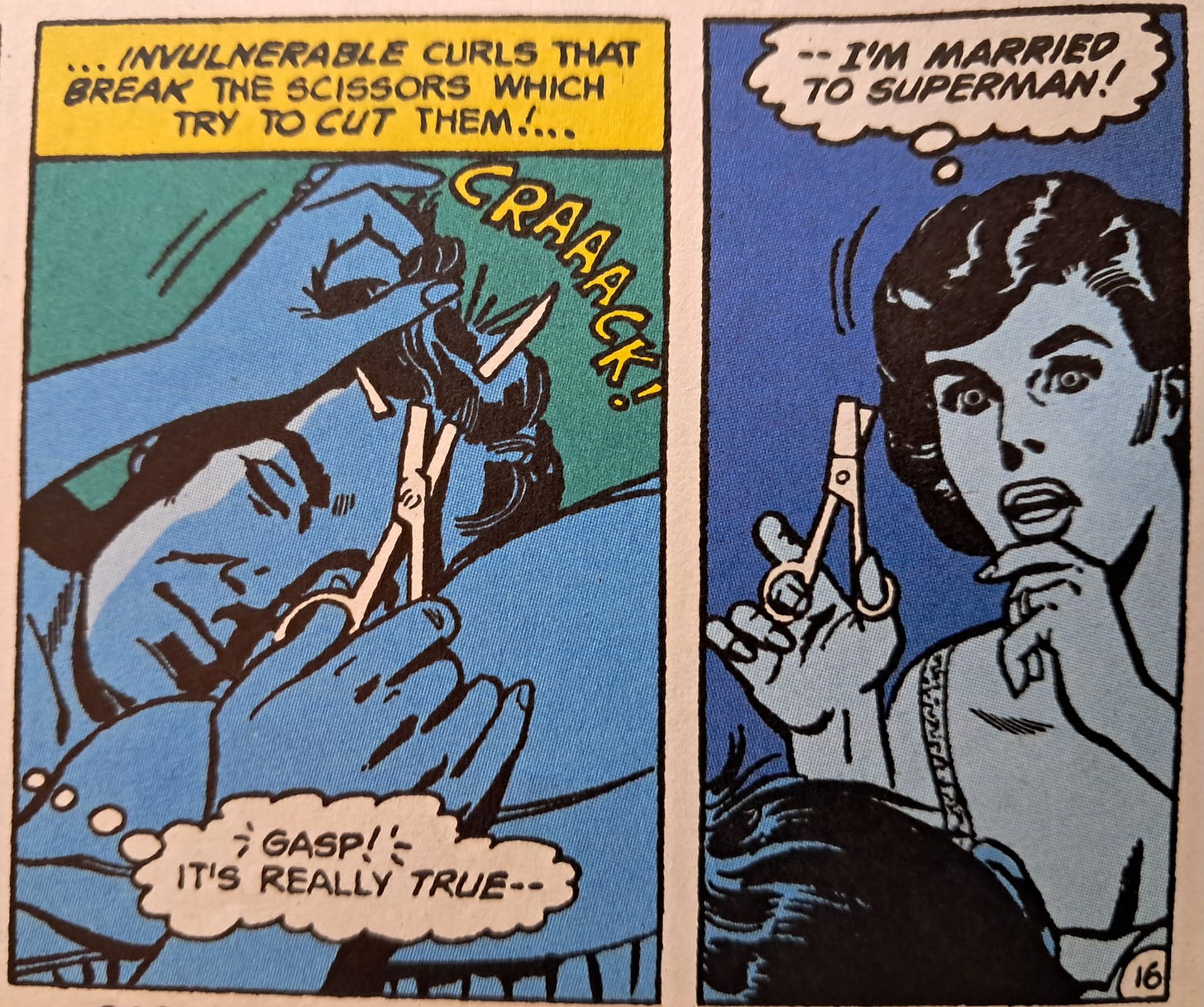

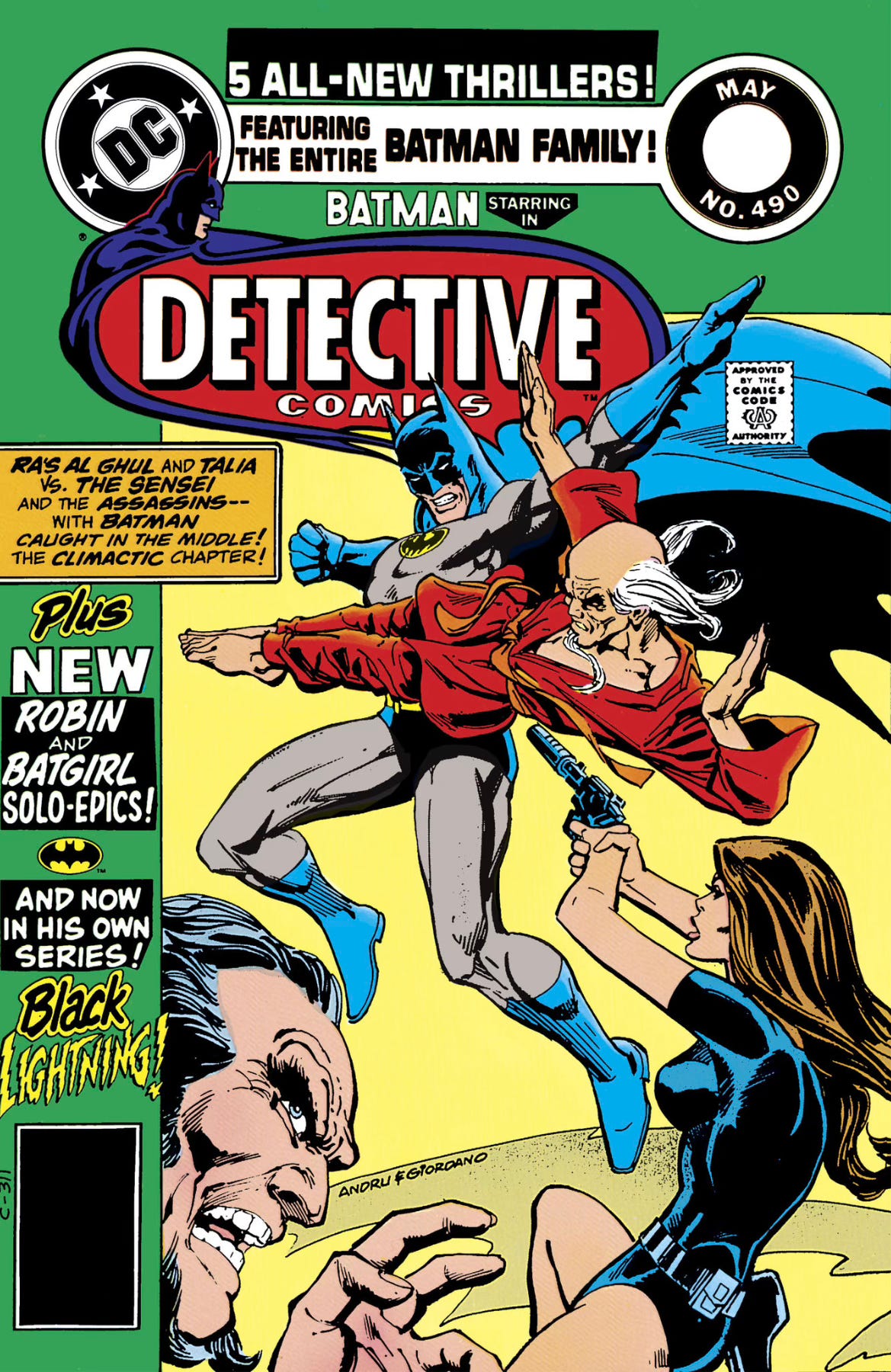
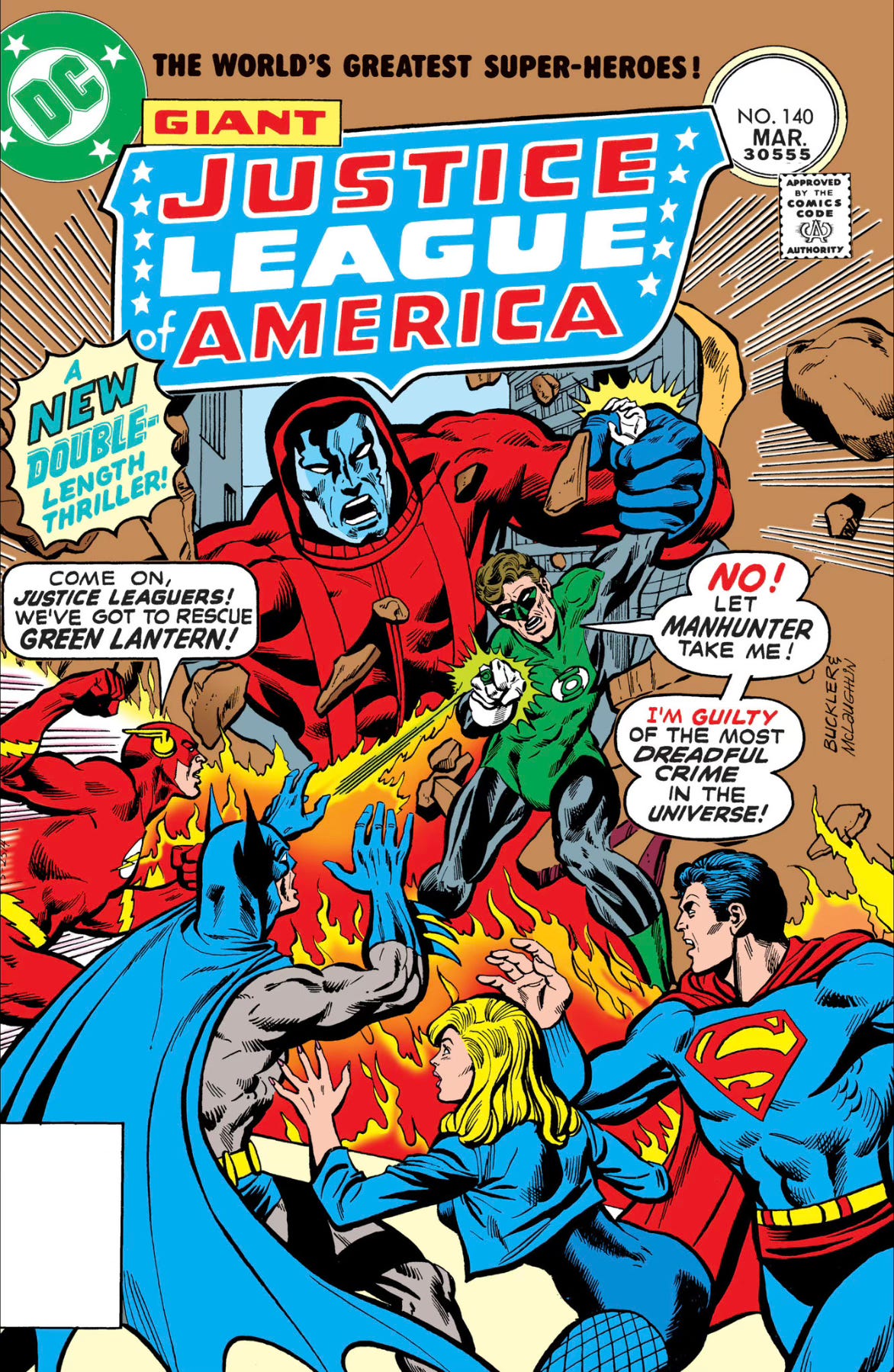
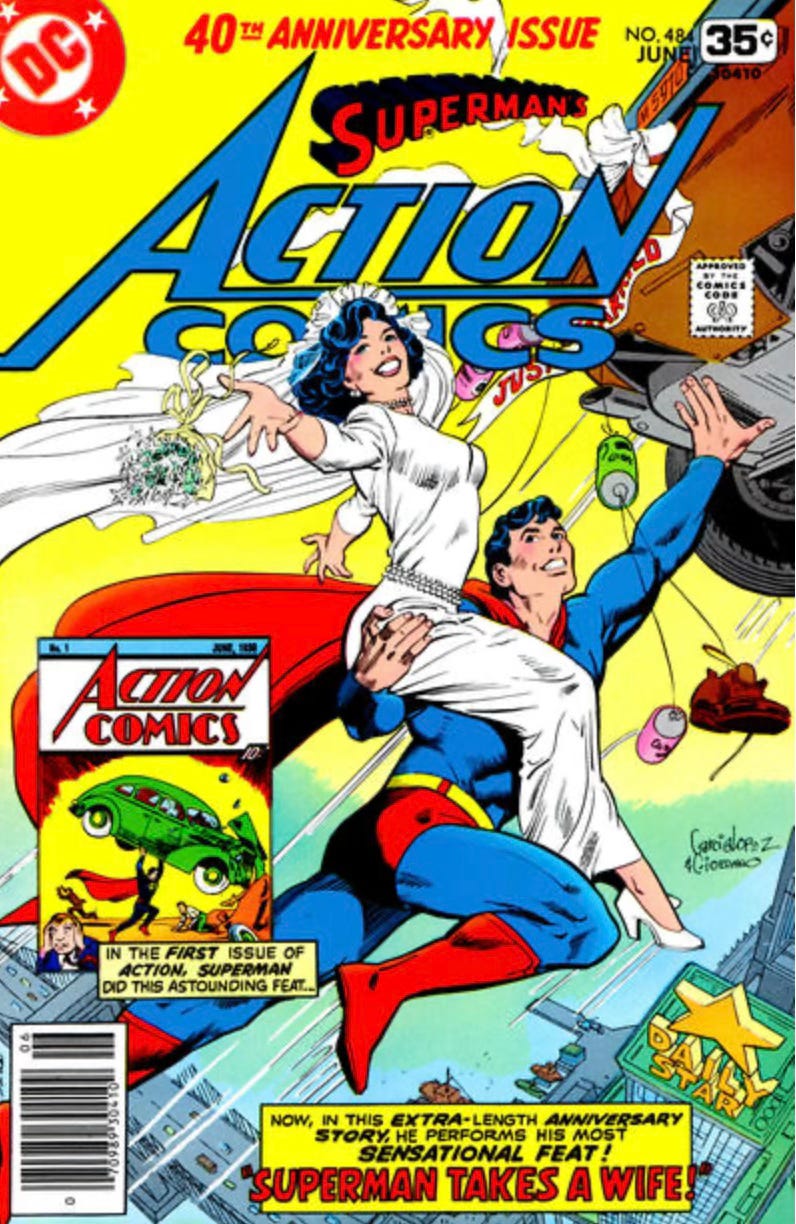
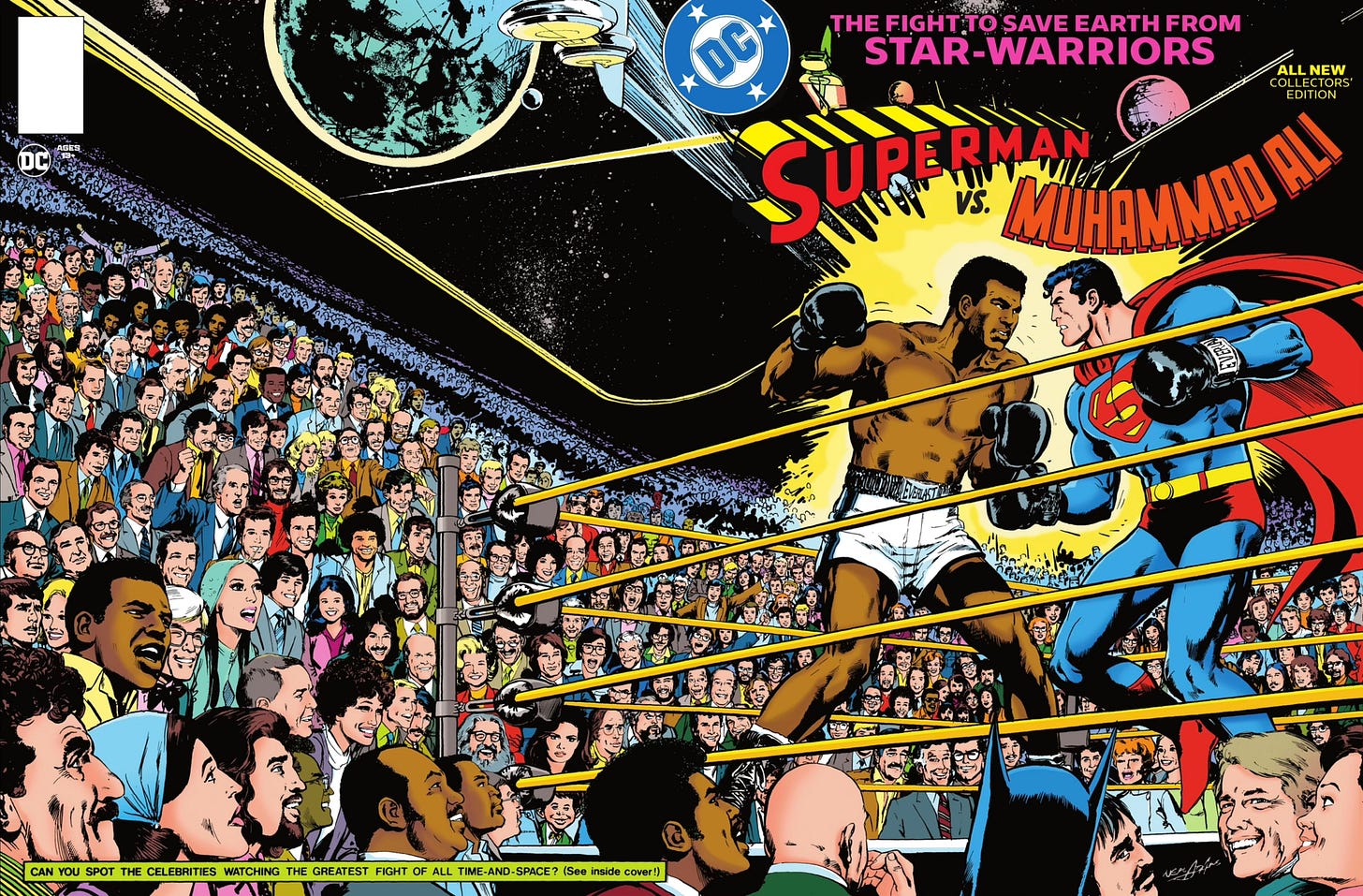
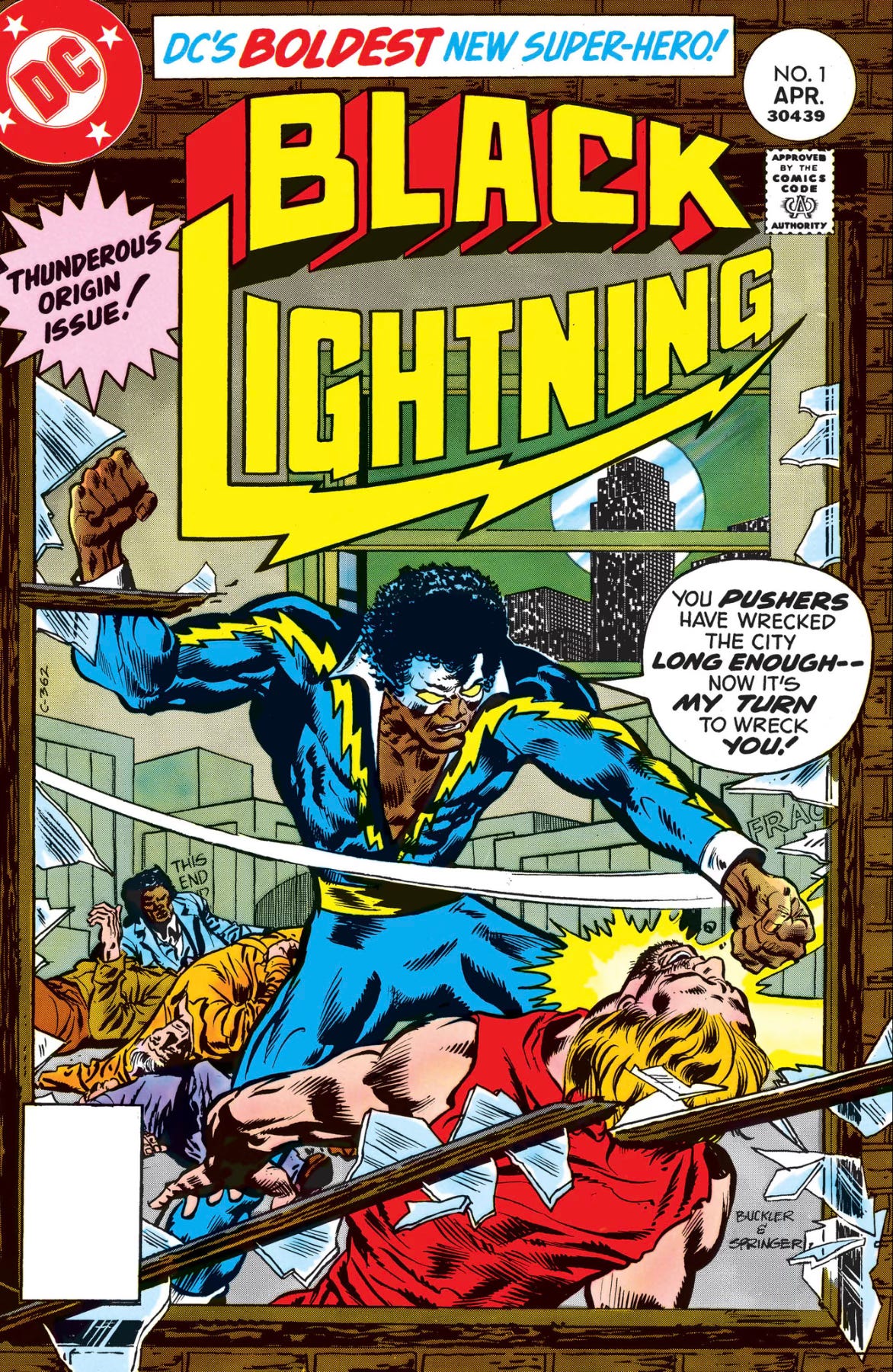
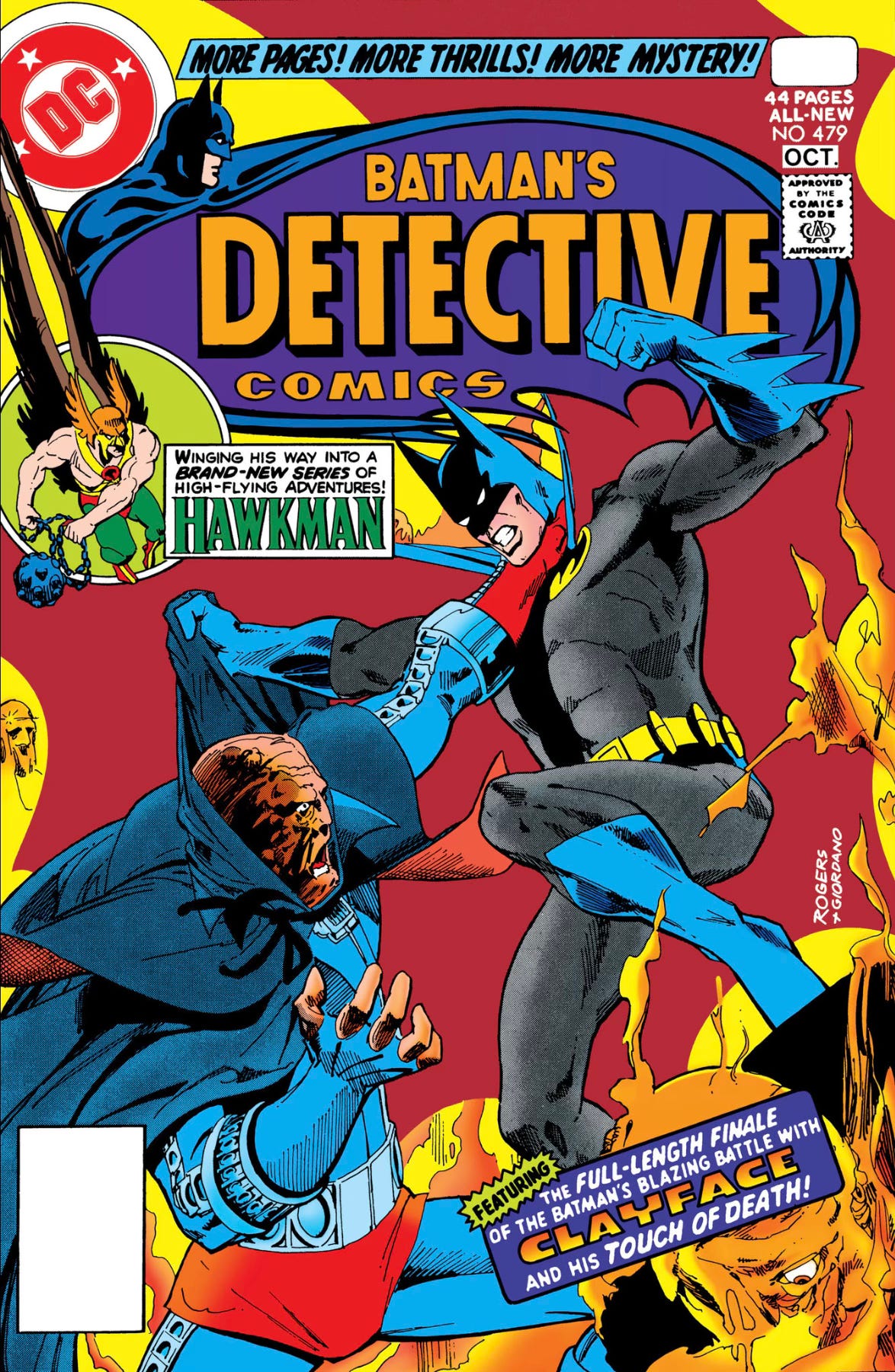


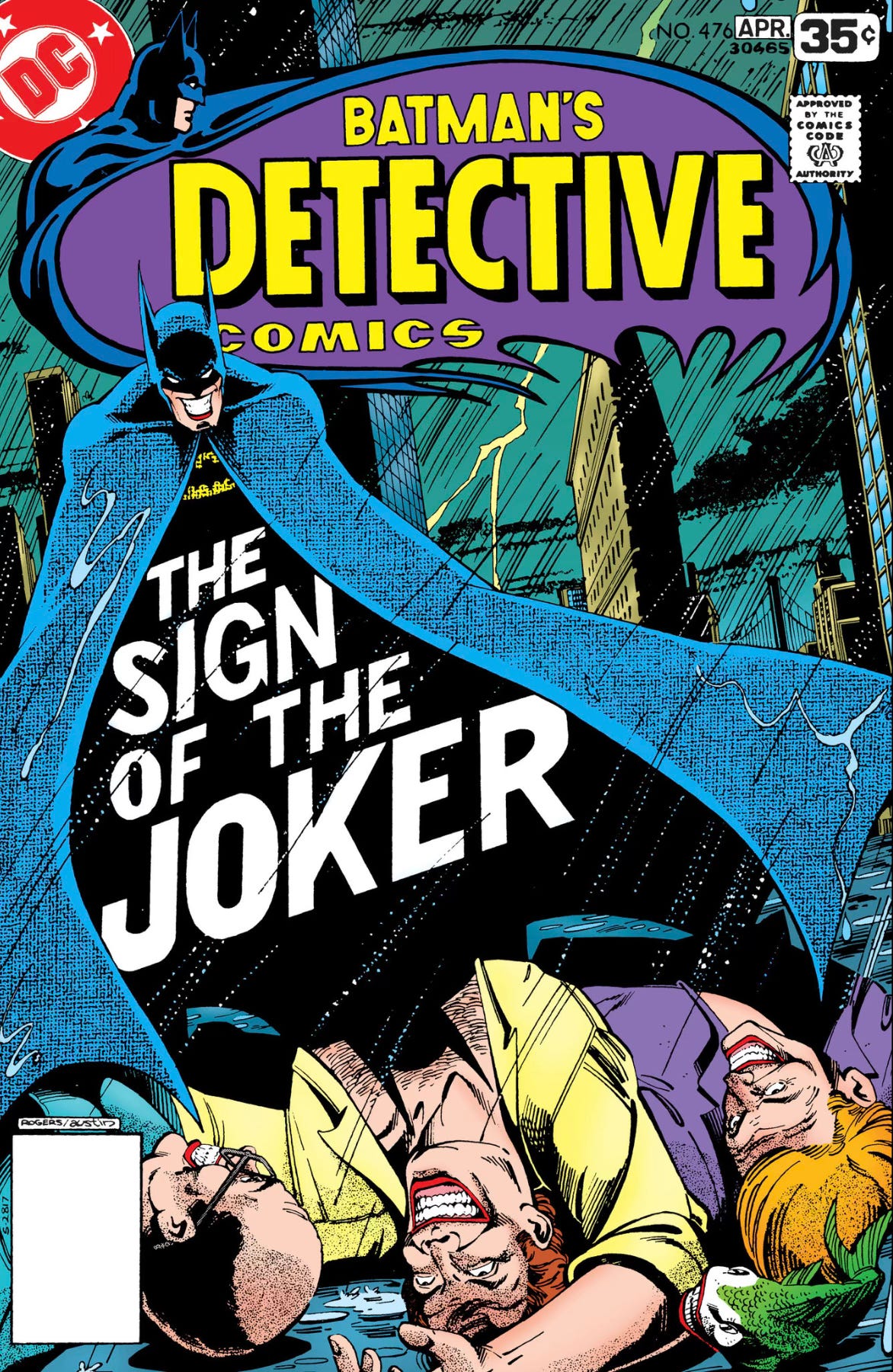
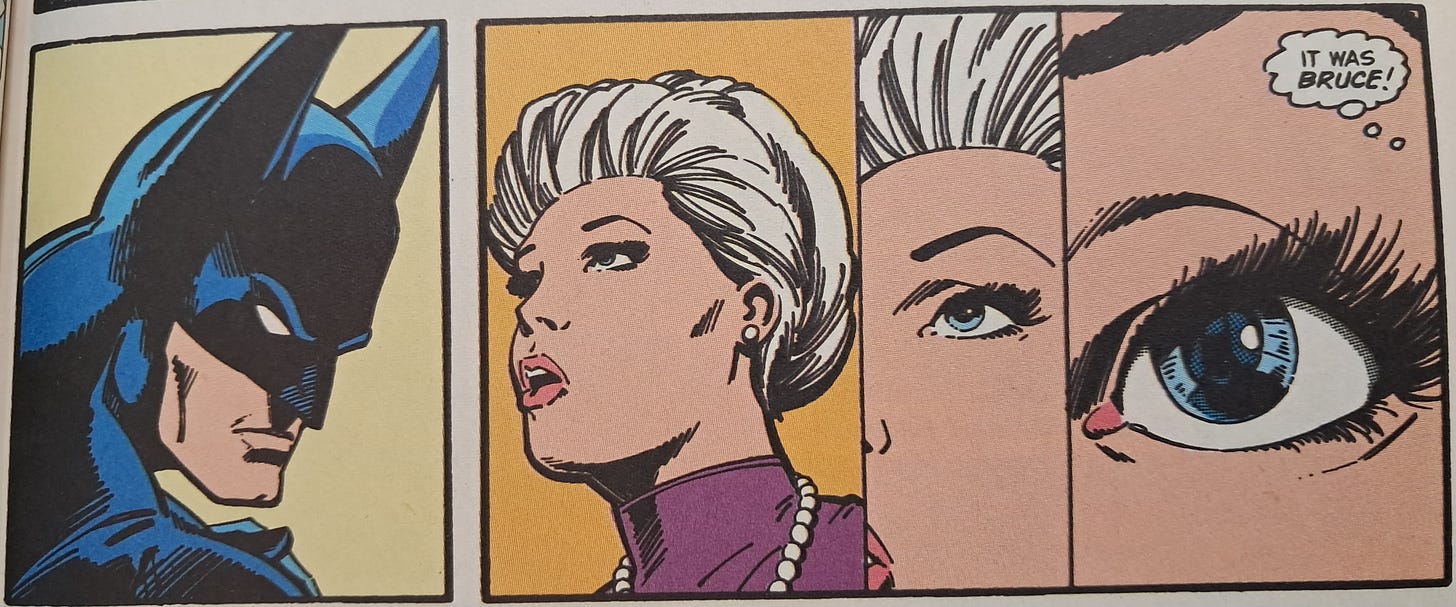
A great selection of DC stories.
It's nice to know that the Superman/Ali thing worked out as an actual comic book and wasn't just the publicity stunt I thought it was...